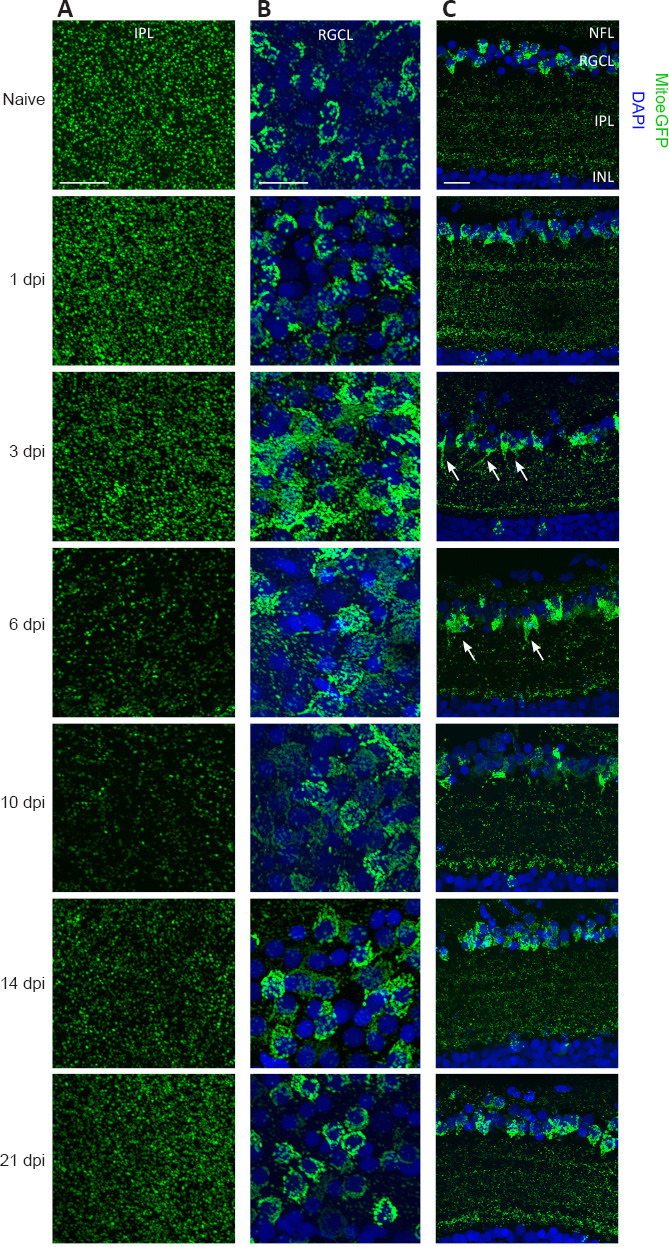Fig. 1
Mitochondrial distribution visualized on whole mounts and cryosections of MitoeGFP+ retinas, harvested at baseline (naive) or after ONC injury.
(A) Morphological observations in the IPL of retinal whole mounts show that the number of GFP+ mitochondria was decreased from 3 dpi onwards, which results in minimal mitochondrial levels from 6–10 dpi. Baseline levels were reached again by 21 dpi. (B) In the RGCL, a rise in mitochondrial abundance and a more scattered pattern were detected at 3 dpi. Both the increase and the spread-out distribution of mitochondria were resolved over the following days, resulting in a similar distribution and number 3 weeks post-ONC. (C) Using retinal cryosections, less mitochondria were observed in the IPL between 3–6 dpi, compared to baseline. In this time window, mitochondria cluster in lines within the inner IPL close to the RGCL (white arrows). At 10 dpi mitochondrial numbers start to increase, first specifically in a region adjacent to the INL; they were restored throughout the complete plexiform layer at later time points. Two to three weeks post-injury, the mitochondrial distribution was roughly similar to that in the naive condition. In the RGCL, more mitochondria were observed at 3 dpi. No obvious changes in mitochondrial distribution were detected in the NFL. Scale bars: 25 µm, representative images of n = 4 per condition. DAPI: 4′,6-Diamidino-2-phenylindole; dpi: days post-injury; GFP: green fluorescent protein; INL: inner nuclear layer; IPL: inner plexiform layer; MitoeGFP: mitochondrial targeting sequence fused to enhanced GFP; NFL: nerve fiber layer; ONC: optic nerve crush; RGCL: retinal ganglion cell layer.

